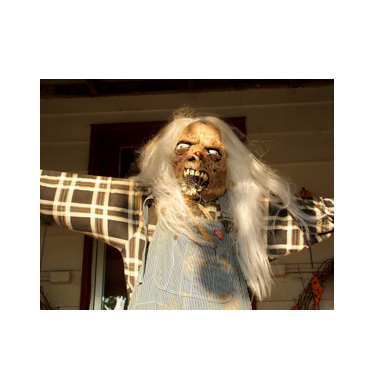


Zero, a Review of Literature and Art
Issue #1, Spring 1949
Edited by Albert Benveniste & Themistocles Hoetis
Published by Zero Press
29, Rue Jacob, Paris, France (6th e.)
Price: two francs or seventy-five U.S. cents
Printed in English
My first thought, when reviewing an out-of-print magazine for an online journal, is wondering if Defunct could become defunct. A digital publication will never molder in a basement or be preserved in acid-free, lignin-free polypropylene archival sleeves. This era’s digitized produces will be housed in a vast data bank, encased in miles of lead and concrete and filtered air. Imagining such a dystopic post-apocalyptic electronic library reminds me that reading a sixty year old magazine is very similar: this world must resemble a dreadful shambles to those of the past.
As with reading any literary magazine, there is great pleasure found in Zero’s poetry, fiction and nonfiction. But there is also an equally strong melancholy element inherent to the careful examination— even exhumation—of an artifact from the history of my own
profession; particularly since I got my start in magazines that are no longer published. Like a collected book, a defunct magazine is unread. Pretty much a polite way of saying the fucker’s dead and gone, and these brittle, yellowed wood pulp pages are the remains, the corpse of art.
Zero: a Review of Literature and Art published six issues from 1949 to 1954, headquartered in Paris, London, Tangier, Mexico City, Dublin, and Philadelphia. The final issue appeared in 1980. The original editors were American writers, Albert Benveniste and Themistocles Hoetis, both of which are pseudonyms.
A brief overview of the life of George Solomos (AKA Themistocles Hoetis) will draw the envy of many a young writer typing with self-conscious franticness on laptops in coffee shops. Or, as I did thirty years ago, writing longhand in cheap breakfast cafes, scribbling with fury about the life I lived, the life I desired, and the adventurous life that seemed forever denied to me. George Solomos lived just such a life.
Solomos was from a wealthy Greek family who immigrated to Detroit. At age seventeen he enlisted in the U.S. Air Force to fight in World War Two and was shot down in France. After his rescue, he became a member of the French Resistance, was active in the post-war avant garde circle Le Rive Gauche (Left Bank) in post-war Paris, participated in the Swinging 60s of London, and lived in Philadelphia during the 1970s across from the MOVE commune, which was notoriously firebombed by police officers. During this time, Solomos made two films, published a novel, started a book publishing enterprise, got thrown out of Ireland, smoked hashish with his buddies Paul Bowles and Jane Bowles, founded a film magazine financed by Yoko Ono, received a Rockefeller Grant for a novel still unfinished after fifty years, started a Reality TV series long before the form gained popularity, filmed the final interview with Death Row inmate Mumia Abu Jamal, and published work by Sartre, Beckett, Gore Vidal, Hart Crane, and many others.
Last but not least, Mr. Solomos was totally ripped off by the New York Times, which published an unauthorized anthology of Zero magazine. Along the way there were, of course, multiple love affairs. Solomos lived a life of adventure, romance, collaboration, international travel, and politics--mixing with the coolest of the cool of each particular era, throwing himself into various art Movements—all having begun at age eighteen when he was rescued from an apple tree in France, where he’d landed after the Nazi bastards shot his plane from the sky.
By the way, he is currently the editor of fiba, an online journal about film.
Most importantly, however, he founded Zero, A Review of Literature and Art.
By today’s standards, Zero is more of a pamphlet than a magazine, akin to the Zine craze in the 1990s, sadly supplanted by the internet blog phenomenon, itself swiftly thrust aside in favor of Twitter, whose days are numbered until the next technological breakthrough—hopefully a subcutaneous microchip that will receive transmission of language instantly, allowing the reader to view a poem or story or essay by simply looking at the virtual Table of Contents before their very eyes. But before the future descends, it is time to examine a wondrous antiquity—the literary print magazine!
Zero is composed of 72 pages of pulp paper with a glued spine. Cover art is a crayon drawing by John Goodwin. There is no back cover art or text. Advertisements are for bookstores, a literary press, and the Bard Review, another defunct literary magazine. Zero’s contents include a manifesto, a smarty-pants analysis of a well-known poet’s work, short fiction, poetry, a literary essay, and a personal essay of travel to an exotic locale. Contributor bios appear at the end of the magazine. The center of the magazine has two black and white photographs on special slick pages, depicting people wearing Bolivian Carnival Masks. There is even a politically-correct aspect since the contributors include at least two gays, two blacks, a poor Southern white, and one female.
With few exceptions, I could be describing the bulk of contemporary literary magazines. Zero unwittingly forged a template that remains damn near unchanged to this day. The biggest shift has been in those contemporary magazines with enough dough for high quality multi-color art folios and super-cool covers. The most glaring change is the advent of the “theme issue,” in which the editors, at a loss for what to print, latch onto a vague topic and rummage through their overflowing submission piles for material that fits.
The bulk of our contemporary literary magazines still rigidly follow a style established by a pair of bohemian, far Left, proto-beat poets engaged in something fresh and original and rebellious. How drastic it must seem to them now! Their revolution in Art and Literature gave birth to the prevailing style-- revolution co-opted and homogenized for the masses, producing the same jarring disconnect of stepping into an elevator and hearing sanitized tones of The Stones, The Clash, Nirvana, or Ludacris.
It is important to note that Zero was published a full four years before the inaugural issue of The Paris Review, which clearly borrowed Zero’s style and format, right down to a portfolio of visual art. (To be fair, The Paris Review did add the Literary Interview, which has also become de rigeur for serious magazines.) Zero pioneered the widespread practice of publishing established writers alongside newcomers. The first issue contains work by Richard Wright, James Baldwin, Kenneth Patchen, Christopher Isherwood, William Carlos Williams, Warren Wirtz, Mason Hoffenberg, John Goodwin, Edith M. Smith, and Bill Caskey.
Zero begins with a brief and practically unintelligible bit of gobbledy-gook explaining its name, even asking the reader’s permission for the indiscretion of a conscious use of symbolism, after explaining that Zero is a symbol for the afore-mentioned gobbledy-gook.
Next comes Wallace Fowlie’s equally impenetrable analysis of Stephan Mallarme, an essay marked primarily by the pretentiousness of never using Mr. Mallarme’s first name. Zero’s first piece of fiction is “The Glacier Station” by Edward McGehee, a pair of first-person anecdotes about the glorious Southern past. One relates the loading of a live cat into a cannon and firing it toward a group of society ladies dining beneath the shade of a bough-house. The cat strikes a woman in her excessively described bosom, killing her instantly. The cat, of course, survives and escapes. The second anecdote is no better.
Patchen’s poems are terrific.
Williams’ poems are more than terrific.
The story and poem written by the editors are confirming bits of evidence that, despite their intentions and ambitions, the best editors should remain true to that vocation. Sort of like how a mailman might not be the best correspondent.
This particular issue is most significant for publishing back-to-back pieces by Richard Wright and James Baldwin, both of whom were living in Paris at the time. The editors clearly knew they had something juicy on their hands. Baldwin was twenty-four years old, determined, ambitious and relatively unpublished. Wright was forty-one years old, in the flower of his remarkable writing career, palling around Paris with Sartre and Camus, his play directed by Orson Welles on Broadway, at work on the The Outsider, the first American existential novel. Wright befriended young Baldwin, who referred to Wright as “the greatest black writer in the world.”
Zero published “The Man who Killed a Shadow,” a short story with Wright’s signature themes of rage, violence, lust and a protagonist with a profound lack of self-awareness. Immediately following the story was an essay by James Baldwin, “Everybody’s Protest Novel.” In it he castigates Harriet Beecher Stowe’s dreadful novel Uncle Tom’s Cabin. The last paragraph concerns Richard Wright’s novel Native Son, a book Baldwin deems a failure. He considers Bigger Thomas a descendant of Uncle Tom, and posits that Stowe and Wright both operate from the same wrong-headed view of race in America.
Needless to say, the essay destroyed the friendship between Wright and Baldwin. However, the essay did go down in history as notorious and infamous--not too shabby for a young fellow!
What more could a fledgling magazine ask for? A literary feud! Art, poetry, fiction, essays! Original art! This little magazine, truly little at 5 x 8 inches and 72 pages, did its job tenfold. All salute Zero!
Of course, it is possible to take another stance altogether—that two White American men deliberately paired the story and the essay in an effort to divide and conquer the only two Black American writers in Paris at the time. But then, I suppose it’s not P.C. to retroactively inflict current P.C. standards on the past.
My personal belief is that all young artists are duty-bound to attack the preceding generation. Some do so through their own artistic enterprise. Others attack via reviews and essays. The sneakier and more dangerous sonsofbitches attack through the under-handed means of dispensing awards and grants; of rumor and gossip and speechifying; and of not inviting people to visit the universities where they teach. Younger artists today launch their attacks online. But be careful, tyros. Heed the errors of the past. Before publishing his first book, Baldwin sacrificed the friendship of a great writer, a loss he regretted all his life.
A final caveat/manifesto for young writers today—attack your forebears, launch the catapults, loose the hounds of hell! The best and most lasting assault is by making work as good or better than them; by absorbing their lessons and going further; by giving the world something fresh, original, revolutionary, and compelling.
Like Zero magazine did.

